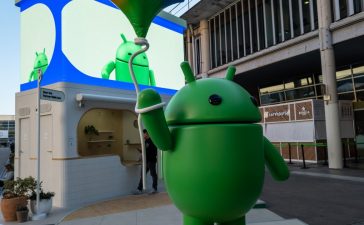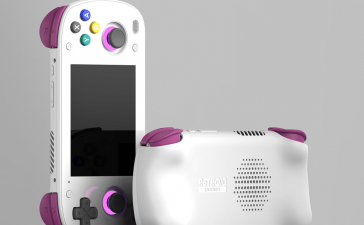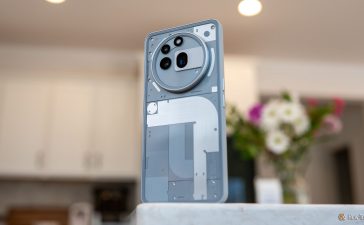While nobody was paying much attention, Amazon created a free, nationwide wireless network that reaches 90% of the US population. It’s called Sidewalk.
It used to be open only to select developers. But Amazon this week made software and hardware development kits available to the public, along with a test kit for checking connectivity.
I first wrote about Sidewalk here in 2019, when the service was announced. Amazon launched it to select partners in 2021.
A walk on the Sidewalk
Unlike, say, Z-Wave, Sidewalk is not a mesh network. It’s an LPWAN — a low-power, wide-area network optimized for IoT (Internet of Things) devices. It’s great at securely and privately sending small quantities of data impressively long distances.
Sidewalk is comparable in practice to Apple’s Find My network, which enables any Apple device to be tracked with an Apple phone, tablet, or laptop. It does this by enabling any item — say, a lost iPhone — to connect to any other Apple device owned by any other person.
Apple devices are the distributed hardware for the Find My network. The hardware for Sidewalk is Amazon’s range of security cameras and smart speakers, representing millions of devices.
Until now, network has existed mainly to enable limited functionality of Amazon devices, even if the home Wi-Fi network they’re attached to goes offline. It also served as a network for a small number of participating companies.
Connectivity to Sidewalk is free for anyone with a device that connects. And free for Amazon as well! By simply adding a Sidewalk section in the Terms of Service for its connected devices, Amazon gets permission to use up to 500MB of each user’s home network connectivity per month — and boldly ships those devices opted in by default. (Users can opt out using the Amazon Alexa and Ring mobile apps.)
Sidewalk uses several wireless technologies: Bluetooth Low Energy (BLE) for short distances; LoRa for long distances (up to a half mile away); and frequency shift keying via 900MHz. Endpoints automatically choose the best technology on the fly depending on distance and other factors, and automatically “load balance” the use of bandwidth among Bridges within range.
Install a Ring Floodlight or Spotlight cam or an Echo smart speaker, and you’re donating some of your home network bandwidth with random passersby. Those devices function as Sidewalk Bridges (also called Sidewalk Gateways), which connect any Sidewalk device (also called Sidewalk Endpoints) within range with Amazon servers via the home Wi-Fi network to which they’re connected.
Amazon appears to be serious about Sidewalk security; the company says it can’t see anything but routing data on Sidewalk network traffic. Owners of Bridge devices (cams and smart speakers) can’t see any data or who’s connecting. And data is protected by three layers of encryption. The company uses what is essentially the zero-trust model, requiring only Sidewalk devices to connect, and authenticating each device at the serial number level each time they want to communicate via the system. Privacy and anonymity is effected using one-way hashing keys, cryptographic algorithms and rotating device IDs.
The many uses of Sidewalk
Sidewalk-enabled devices exist on the market. For example, Netvox sells a home sensor cluster that monitors air conditioning and water leaks. Meshify makes water-leak sensors. New Cosmos offers a gas alarm. Primax sells a smart door lock. DeNova makes natural gas alarms. MarryIoT ships air quality and option sensors.
Amazon’s use of Sidewalk for tracking is called the Community Finding feature. It’s used by Tile trackers, which predate and compete with Apple AirTags and which tap into the Sidewalk network, so you can use the Sidewalk network to find your dog if he’s wearing a Tile tracker collar or your wallet if you accidentally leave it in an Uber.
Amazon also supports its CareBands program with Sidewalk. CareBands are connected devices that enable people who can’t fully take care of themselves to be tracked and monitored — for example, enabling seniors to continue living at home, rather than in a care facility. They look like wristwatches, but without a screen or watch face. Amazon may extend the program to also help with addiction treatments, child tracking, contact tracing, and other uses. The program is currently in a pilot stage.
While ordinary devices can connect from a half mile away, specific devices, such as Tile trackers and Amazon CareBands, can connect from a few miles away.
You can use the Amazon Alexa and Ring apps to turn off Community Finding, but still use the Sidewalk network for your own devices.
Nordic, Silicon Labs, Texas Instruments and Quectel partnered with Amazon to offer SDKs (software development kits) and HDKs (hardware development kits).
Sidewalk means business
All this information about using Sidewalk for home IoT devices and trackers might lead you to believe this is a pure consumer play. In fact, Sidewalk is natively integrated with Amazon’s AWS IoT Coreservice and is a brilliant untapped resource for businesses, from startups to established enterprises. (In fact, businesses building Sidewalk-compatible devices must use AWS to do so.)
Let’s start with the obvious applications. Since the pandemic, remote work has become normal for many organizations. Companies now have thousands of employees who have abandoned the city centers and corporate-owned and operated networks and vanished into the suburbs, relying on unreliable and insecure consumer networking hardware, software, and services.
Sidewalk represents a direct, secure line from remote work devices to company cloud applications — not for normal data, but for setting up, pinging, resetting, monitoring and tracking of devices and other low-data uses. And it could prove valuable for any kind of fleet management — a backup tracking and monitoring option for places where mobile broadband doesn’t reach.
Sidewalk should trigger a wave of new startups, and connectivity for existing startups — curbside deliveries, delivery robots, smart trash cans — anything that involves IoT devices “in the wild.”
Two major problems with business IoT are: 1) how do you connect in the field; and 2) IoT security. Sidewalk instantly solves both challenges for many US businesses. So now that Amazon has opened Sidewalk to developers of all kinds, it makes sense to take a serious look at this untapped resource.
Don’t be distracted by the consumer-centric foundations of Amazon Sidewalk. This is a big boon for business.
Copyright © 2023 IDG Communications, Inc.












